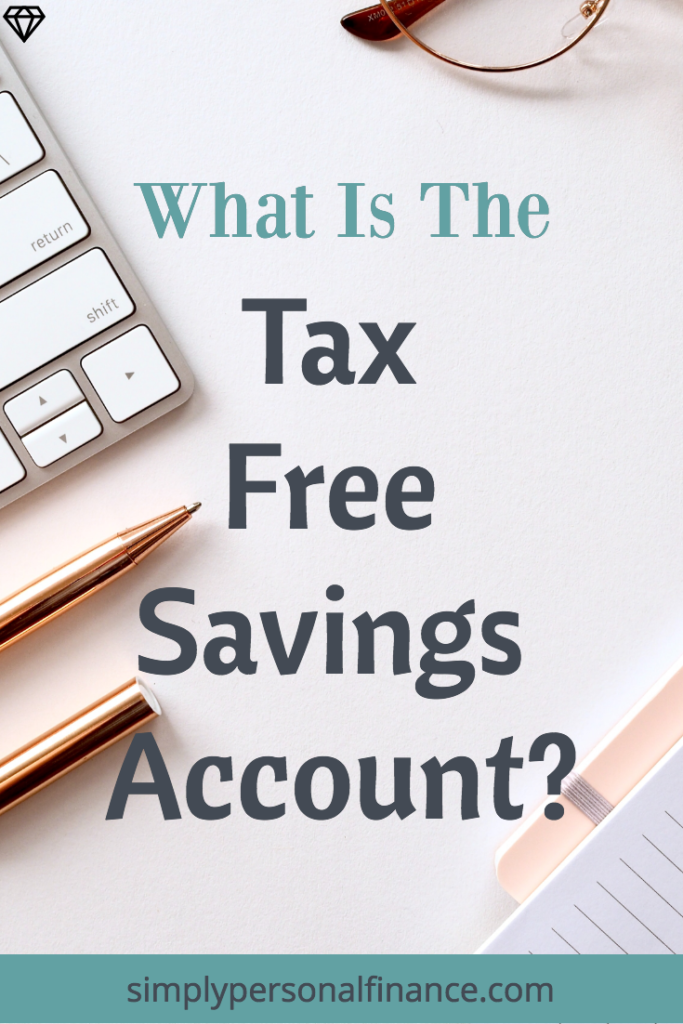You know you should probably have a Tax Free Savings Account (TFSA) set up but you’re not exactly sure how it works or how to use it.
Don’t worry! In this post I’m going to explain the very basics of the TFSA and how you might want to go about setting one up. This will take you less than 5 minutes to read and, not to be dramatic or anything, but it could seriously change the outlook of your future.
Is The TFSA Really Just A Savings Account?
Yes and no.
The name “Tax-Free Savings Account” is a little confusing because it seems like it’s just another savings account, but there’s so much more to it! You can open as many TFSAs as you want to so you can put your money in a lot of different places.
You can hold your money in, 1) cash in a high interest savings account, but what you might not realize is that you can also, 2) invest your money in stocks, guaranteed investment certificates (GIC’s), index funds, mutual funds and exchange traded funds and so much more. If you don’t know what these investment products are yet, you might want to check out the article, The Basics of Investing In Canada.
A TFSA is commonly referred to as an “investment vehicle” because it’s an account through which you can purchase investment products. It’s not just a savings account!
So, once you’ve decided you want to open up an account, you’ve got a lot of options to consider. Let’s start with the basics.
Who Can Open An Account?
You can open up a TFSA as a Canadian citizen with a Social Insurance Number as soon as you reach the age of 18 or 19, depending on the age of majority in your province.
*As per the government of Canada website, non-residents with a SIN can also open an account but they will pay a 1% tax every month on the money in the account. Definitely not ideal…
Who Should Use One?
Anyone and everyone (Canadians of course!) should take advantage of a TFSA. You really can’t go wrong here. However, you’ll want to take full advantage of your TFSA when you’re young and making a lower salary. Why? Because you’re paying tax on the money that goes into this account.
Hear me out…
When you are employed in Canada, you pay a certain portion of your income to the government for income tax. Right? Right. Now the money you put into your TFSA will be after-tax money so you will have already paid your income tax.
When we are younger, we are generally making a lower salary and so we are in a lower tax bracket. While we are paying low taxes, we want to make sure to take advantage of our TFSA as much as we can.
With that being said, a TFSA is a great tool for anyone and everyone to let their investments grow tax-free.
Still with me? Let’s keep going and get in to the interesting stuff.
Tax Sheltering
Now, the key to your TFSA is any money that you make in the account is growing 100% tax free. Your TFSA is what is known as a tax-sheltered account.
Simply put, if I put $10,000 into my TFSA and over the years my investments grow to $100,000, I will not be taxed on the additional $90,000 I made in capital gains (fancy finance lingo meaning the money grew in value, yay!). I will have only paid the income tax on the initial $10,000 and the rest will grow tax-free.
Woohoo!
Withdrawing From Your TFSA
Another key advantage of your TFSA is that you do not pay taxes when you withdraw your money from your TFSA.
Again, let’s say I put $10,000 into my TFSA and it grows to $100,000 and I want to take the money out.
-
I already paid tax on the initial $10,000 based on my income the year I put in the money,
-
I won’t be taxed on the $90,000 in gains,
-
I withdraw the full $100,000 and I get to keep the full $100,000!
I’ll say it again for the people in the back! Since you have already paid the tax on the money that went into the account, when you withdraw it, you do not have to pay any additional taxes. You can start to see how this account will save you loads on capital gains taxes in the future.
The only fee you might have to pay when withdrawing the money would be from the financial institution you have decided to set up your account with. Hint hint: this is a good question to ask when you are setting up the account!
Contribution Limits
*IMPORTANT*
It all sounds a little too good to be true, doesn’t it? Well there is one catch. There’s only a specific amount of money you can put into your TFSA. It is not unlimited! You can seriously get dinged in taxes if you over-contribute so you need to be super careful on staying up to date with the amount you do contribute.
If you turned 18 (or 19 depending on the province) in 2009 or before, you can contribute the maximum amount of $69,500. Every year there is a maximum amount you can contribute and it will start to accumulate if you don’t use it. So next year, another $6,000 will be added to the current $69,500 limit and so on and so on.
There’s no need to panic, the contribution room will always be there waiting for you when you’re ready.
Like I mentioned earlier, you can open as many TFSA accounts as you want but the amount of money you can contribute is still the same. You will have to split your contribution amount throughout all of your accounts if you choose to open multiple.
If you do not yet have a CRA account, visit the Government of Canada site and please set one up. Like right now! Go! You’ll be able to see how much contribution room you have left and keep track over time.
The great thing about the TFSA is that you can withdraw however much money you want out of the account at any time. And, when you withdraw the money you will get that contribution room back the following year!
Word of caution: you have to be really careful not to over-contribute. You will pay a 1% tax every month for any excess money in the account. Other hefty fees might also apply for contributing past your limit. Don’t be that guy!
To be clear, your contribution room only pertains to the money you yourself put into the account. So if you put in $10,000 and it grows to $10,000,000 (wouldn’t that be nice?), you have still only technically contributed $10,000 and can continue to contribute up to the maximum amount.
What Is Your Savings Goal?
If you’re planning to buy a house, maybe pay for a wedding, even start saving for retirement, you may want to keep these funds in your TFSA and let them grow tax-free.
The TFSA was designed to help people grow their savings and investments tax-free all while keeping the funds easily accessible to them throughout their lives.
Honestly, there aren’t really any downfalls to using a TFSA, you just need to be wary of that maximum contribution amount. The TFSA is extremely flexible and if you end up needing the money at any point, you can withdraw it very easily.
How To Set Up A TFSA
First you need to figure out what kind of product you want to buy into. Your savings goals should be top of mind when choosing an investment product. Again, if you’re not sure what products are right for you, check out The Basics of Investing In Canada.
TFSA Savings Account OR GIC
Now if your specific savings goal won’t allow you to take any risk (losing even a penny of your money at any point in time would result in a complete panic), you should probably set up a TFSA savings account or GIC to keep your money super safe all while taking advantage of the tax sheltering. You’ll need to set one up directly with your financial institution of choice.
Tip: I wouldn’t just walk into your current bank and set one up, be sure to shop around and find the best rate. As long as the bank or credit union is CDIC insured, your money is safe. The best banks I’ve found for TFSA high interest savings accounts are Alterna Bank and Motusbank.
Now if you’re wanting to invest your money, you’ll need to put in a little more work to figure out what kind of product might work best for you, always keeping your savings goals top of mind.
As soon as you chose to invest, you need to be mentally okay with the possibility of both losing and gaining money over time. Investing can be a bit of a rollercoaster ride and your ability to cope with the ups and the downs is what is known as “risk tolerance”. You’ll usually need to take a questionnaire when signing up with a company who will manage your investments but you can also take this Vanguard Questionnaire if you’re interested to get an idea of where you’re at.
Another thing you should consider before investing is the thought of not touching the money you invest for at least 5 years. Time is a crucial component of successful investing so if you’re going to need the money in the next 6 months, investing is probably not the best route to go at the moment.
Now with that being said, here are a few options for you if you’re ready to get started.
Mutual Funds
Most commonly, Canadians set up a TFSA with their bank and invest in mutual funds. You always want to keep your investment fees under 1.0%, but in Canada, you probably won’t even be able to find a mutual fund offering fees under 2.0%. My loyal readers know I do NOT recommend mutual funds what-so-ever but hey, I can’t tell you what to do!
Index Funds
If you’re looking to invest in index funds, the TD e-series are highly recommended products in the Canadian personal finance world.
Exchange-Traded Funds (ETFS)
I personally have a TFSA set up with Wealthsimple (minimum initial investment is only $1!) and have always invested in exchange traded funds (ETFs). Wealthsimple along with Questwealth Portfolios, Nestwealth, Justwealth and many others are online investment management services (aka roboadvisors) in Canada that will deal with all of the investments for you for a fee of around 0.5%.
If you’re comfortable buying ETFs on your own, Questrade and Vanguard ETFs are also highly recommended. Once you start investing yourself, fees become closer to 0.2% or less!
Individual Stocks And More
If you’re interested in investing in individual stocks, options and more, popular brokerages include Questrade, TD Direct Investing and CIBC Investor’s Edge.
You can also find an investment firm or wealth management company and hire them to manage your investments. Remember, you always want to keep your fees below 1% and just as a heads up, they likely won’t work with you until you have a few hundred thousand dollars ready to invest with them.
Now you can do a combination of a couple or all of these options, just make sure to track the amount you contribute to each TFSA so you don’t accidentally over-contribute when dealing with multiple accounts!
If you’re still not sure what products might be right for you, consider consulting with a fee for service financial planner. And no, I don’t mean a financial advisor at a bank. That would simply be talking to a mutual fund salesperson. You want to find a professional with an unbiased opinion who will take your financial wellbeing into consideration without selling you products.
Final Thoughts
I hope you have a better understanding of the Tax-Free Savings Account and how you can use it to your advantage in your own personal finances. If you want to start investing, you really can’t go wrong with using a TFSA as your investment vehicle.
Related Articles
The Basics of Investing In Canada
When Is The Best Time To Start Investing?
5 Things To Do With Your Tax Return
Disclaimer: I am not a certified financial planner or investment advisor. The ideas posted on this website are my own opinions on how I manage my personal finances. The content is specifically for educational and informational purposes and is not considered professional financial advice. Everyone’s finances work differently and you will have to do your own due diligence before making any financial decisions.
Pin it for later!









Leave a Reply